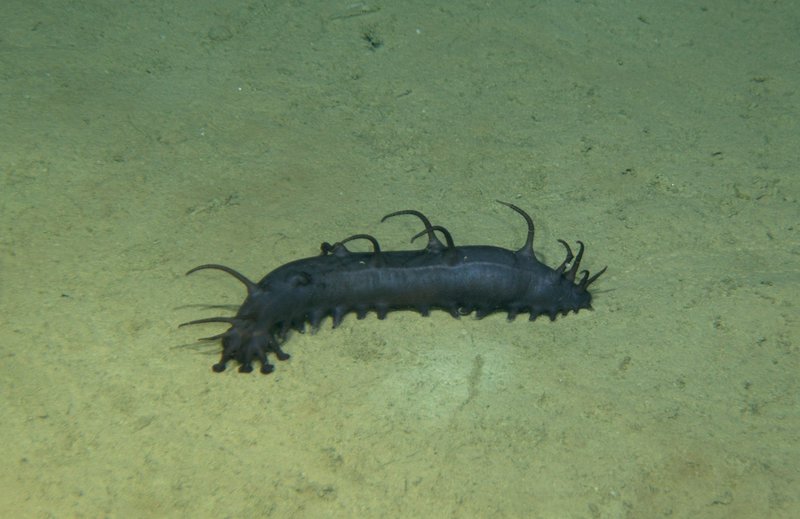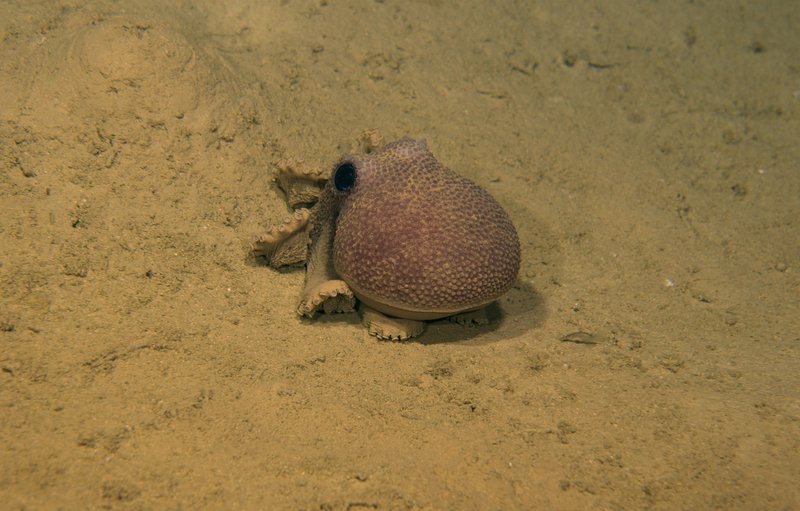
By Katrin Iken, Professor in Marine Biology, College of Fisheries and Ocean Sciences - University of Alaska Fairbanks
July 25, 2019
After what seems like a long time of preparing and transiting, but what in reality were only a couple days, we are finally taking our first samples. Today, we did the first ROV dive to the seafloor on the continental slope that leads into the deep Gulf of Alaska.
Why are we looking at the continental slope, you wonder, when the purpose of the expedition is to explore the seamounts? Well, we want to compare the seafloor (benthic) communities on the continental slope to those at the base of a seamount at a similar depth. We want to figure out if the deeper portions of a seamount are as unique as we know their tops to be or if the lower portions of a seamount pretty much look like any slope that rises up from the deep abyssal plain. Therefore, we did our first benthic remotely operated vehicle (ROV) dive on the slope at 2,500 meters (8,202 feet).

This large purple sea cucumber is using its front tentacles to gather up food from the sediment at 2,500 meters (8,202 feet) depth. Image courtesy of NOAA/UAF/Oceaneering. Download larger version (jpg, 1.4 MB).
The sediment was very muddy and there was a surprising amount of life to be found! Probably the most common organisms we saw were heart sea urchins that dotted the seafloor and brittle stars that were half buried in the sediment. However, it was the several individuals of a large purple sea cucumber, the cute octopus curled up on the seafloor trying to be invisible, or the large number of acorn worms – gelatinous worm-like organisms belonging to a rare marine group called Hemichordata – that stood out in the end.
The sometimes-odd forms of these deep-sea creatures never cease to amaze and contribute to the feeling of entering an alien world. But what is not so alien are the nosy neighbors!!!!! Several large (at least a foot long!) Pacific Grenadier fish were very curious about the ROV and possibly attracted to the light from it. They kept swimming up to the ROV and often got right in the face of the camera! It was fascinating to watch what seemed them exploring us as much as we were exploring them!
Now we are curious to explore in the next few days of how different or similar the benthos is at the base of a seamount at a similar depth.

This octopus was trying to make itself invisible against the seafloor when the ROV came close. Image courtesy of NOAA/UAF/Oceaneering. Download larger version (jpg, 2.6 MB).

An acorn worm (left) and a sea urchin (right) were common members of the deep-sea benthic community at 2,500 meters (8,202 feet) depth on the continental slope. Image courtesy of NOAA/UAF/Oceaneering. Download larger version (jpg, 2.4 MB).